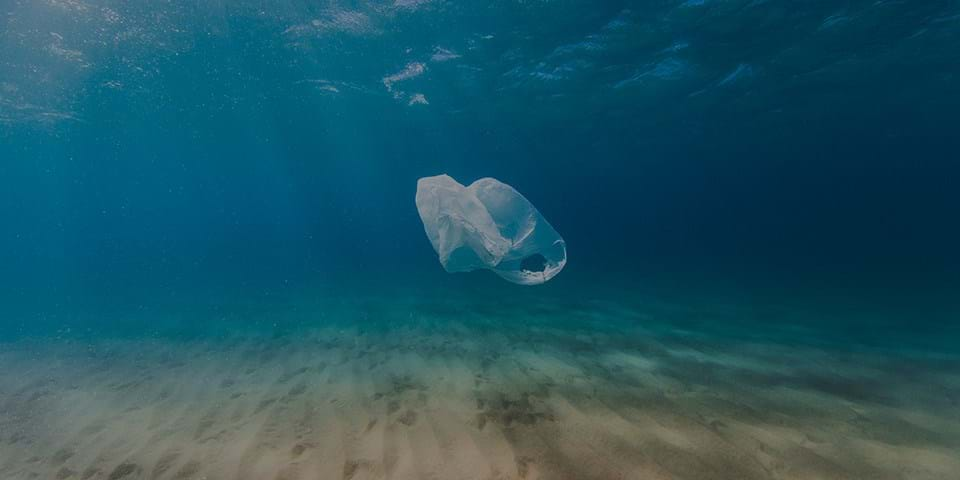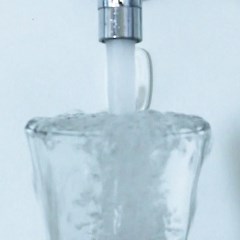MARGO WHITE: You published a landmark study on microfibers in 2011, in which you showed that over 65 percent of plastic pollution on the world’s shores can be blamed on the tiny fibers that come from our synthetic clothing. Was this a surprise?
MARK BROWNE: I was doing my Ph.D., and went out expecting to find lots of fragments of bottles or packaging or things like abrasive beads, but we didn’t find that at all. What we consistently found, across all these shorelines, was that these fibers were the most abundant form of plastic.
So we looked at this first as an observation, then at how consistent it was around the world, and then what could be driving this – what were the pathways into the environment. And we found they could be traced back to the fibers coming from our clothes, out of our washing machines. Scientists are now finding the same patterns, whether they look on land, in lakes, rivers, or in the air. So it’s a pretty big problem.
You’ve said there’s no conclusive evidence of which fabrics shed the most fibers, but the majority appear to come from acrylic, nylon and polyester. Overall is this more of a problem than plastic bags and bottles and microbeads?
If we were going to prioritize a problem based on numbers, clothing fibers would be the number one thing that we should focus on. Everyone is banging on about plastic bags and abrasive beads but they’re found in much smaller numbers in the environment. We’re spending vast amounts of money debating and looking at these issues, but it would be easy to do a study to identify how we should prioritize the problems, find out which is worst, and then start working on those.
What are possible solutions?
There is a range of options, once we understand the pathway to the environment, which is either through people wearing them, or washing them, or in the process of making them. So we need to look at ways to see if we can avoid or intercept those processes so that less of these materials end up in the environment.
So that means things like more durable clothes, washing machines that have filters to trap these fibers, or finding a way to treat material before the fibers are transferred to the environment. We also need to find out which fibers might have less impact on organisms. There are lots of ways to solve this.
There are quite a few products on the market that claim to be helping solve the problem. Is this an issue at risk of green-washing?
Yes. Various companies are coming out with various things like bags to put your clothes in when you put them in the washing machine or devices that you can put in your washing machines that capture these fibers. But if you’re using a bag in your washing machine, you’re trying to solve a plastic fiber issue with a bag that is made from plastic fibers. And if you do collect those fibers, how do you isolate and get rid of them? It’s the same issue with the device that you put in your washing machine that is supposed to collect fibers. There’s no evidence they work. We need to scientifically determine how to reduce emissions of fibers to sewage and then to the environment.
So any solution is a work in progress. Is there anything that a consumer can do in the interim apart from, say, washing our clothes less often?
No, actually, that’s the sad point, even though we started talking about this issue about ten years ago. If you want to do something, you need to start saying to these manufacturing companies, ‘I’m not going to buy your clothes until you start showing us the evidence that these clothes are the most durable and least toxic to the environment’. And that evidence needs to have been published in peer reviewed journals.
You should be asking clothing manufacturers, ‘what are you doing about this particular problem?’ and if they say they are doing something, ask them for the scientific study that proves that solves a particular problem. If you’re paying more money for something because you think it’s better for the environment, it’s entirely right to ask a particular organization how they know that.
But I don’t think people should change their clothing at the moment. I don’t think they should buy a new washing machine, and I don’t think they should buy one of these filters until a peer reviewed study shows they are effective. What we need is better information to make better choices.
You’ve established a research program, Benign by Design, to do that?
Yes, it’s a research program aimed at helping the government and the textile and appliance industries to develop and use cost-effective fabrics that emit fewer and less toxic fibers. In the textile industry, fabrics are generally selected based upon aesthetics, durability, cost, green chemistry and carbon footprints. But the environmental and health impacts aren’t considered because until now much of the scientific research hasn’t been available.
We’re showing companies exactly how textiles lead to fiber pollution and ways to control their emissions, and rigorously and scientifically testing for the most cost effective materials that emit fewer fibers and less toxic fibers.
So we’re informing people about the problems with their products, researching the different solutions that make a difference, and making that information available to public, governments and industries.
What is known about the problems these polymers cause, to animals, and to us?
We know that polymers can cause problems for humans and wildlife because they can last for a long time in the environment, and bio-accumulate – that is, the organism stores them in their cells and tissues, and that can be toxic to that organism. They can also transfer chemicals into the tissues of organisms and they can cause problems as well; some types of chemicals reduce the immune function of an organism. So the debate has moved from people incorrectly assuming they aren’t really a problem, that the polymers don’t bio-accumulate and don’t cause toxic responses, to people putting the evidence together and demonstrating these problems, and that they are often worse than we thought.
Knowing that the ocean is filled with polymers from our clothes can put you off your seafood. Do you eat fish?
Yes I do. If you look at the air in your room, you’ll see all these fibers floating about. They’re in the marine environment, in fresh water, in your house, in your garden, in your compost. Clothing fibers are the most abundant form of waste material that we find in habitats worldwide; they’re going to be in beef, in chicken, in pork, and I wouldn’t be surprised if they accumulate in vegetables as well.
So I do eat fish. Although I won’t eat mussels, because I work with them, and normally they’re quite rancid when I do, so I have that hurling response.

Dr. Mark Anthony Browne is a lecturer and senior research associate at the School of Biological, Earth and Environmental Sciences at the University of South Wales, Sydney. His research is focused on understanding the impacts of human activities on biodiversity and how best to mitigate them. He’s particularly interested in using a scientific basis for managing environmental problems and in that capacity, advises the United Nations, European Union and governments in Australia, U.K. and the U.S.A.







